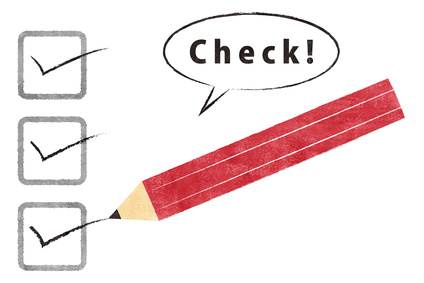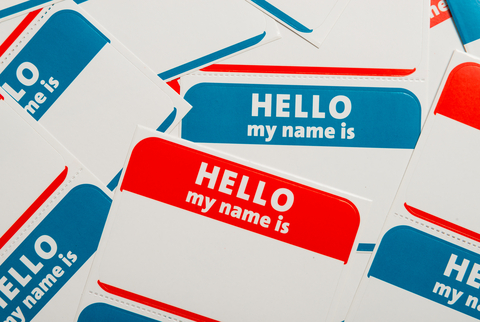The ins and outs of checklists
Mistakes happen. Sometimes we forget. Perhaps we’re stressed by tight deadlines. Or maybe we assume that something’s been done, and we skip steps. In investigations, risk is all about what we’re missing, and skipping steps can lead to trouble. Enter the checklist.
While listening to a recent episode of one of my favorite podcasts, Hidden Brain, I learned about the work of surgeon Atul Gawande and his book, The Checklist Manifesto. As a frequent user of checklists – which really come in handy when you’re running a business and trying to have a life – I was hooked, and I immediately bought the book.
In it, Gawande writes about his extensive research into finding a way to reduce preventable errors in surgery, which led him to explore the effectiveness of checklists. He studied their use in aviation, building construction, and financial investing. He found that specialization and super specialization aren’t enough, because even the experts make mistakes. Gwande concluded that checklists work – for many reasons, including:
- Establishing the minimum steps necessary
- Verifying what steps have been completed
- Creating discipline
- Setting standards for higher performance
The author also emphasizes that checklists benefit practitioners in all industries, which, of course, made me think about investigations. I realized that, while I’ve created checklists for some processes, as a solopreneur I tend to keep my checklists in my head, relying on memory rather than committing them to paper. And sometimes I forget to use them. Time for a checklist makeover.
First, what are some best practices? According to Gawande, good checklists are precise, efficient, and easy to use. They don’t spell everything out and, instead, provide reminders of the most critical and important steps. They’re also “practical and field-tested.” An effective checklist needs clearly defined “pause points” for decision-making and evaluation. Use brief, clear language and organize your checklist in a user-friendly format. We also need need different types of checklists: One with all the tasks, and one for communications (checkpoints for information sharing before proceeding to the next steps).
But what about preparing for the unexpected? Like surgery, once an investigation gets started, we can’t anticipate what we’ll find that could mean a change in direction. That’s when your communication plan, or your pause points, come into play. Stop, evaluate, and recalibrate.
It’s important to note – and not covered enough in the book – is that checklists are dynamic. Build in the specified timing and process for updating, and review for outdated assumptions (e.g., changing client needs). Does your checklist still accomplish what it’s designed to accomplish? Technologies, sources, and priorities change, and so do our processes.
Also not emphasized enough in the book is the role of teamwork in developing and maintaining checklists. For example, when Mary Ellen Bates joined the team as our media researcher, I shared with her a checklist I had been using. After just a short time, we both realized that – while the checklist worked for me while I worked alone – it wasn’t working for us as a team. We spent an entire day tearing apart our processes and revising the checklist. Now we both know the minimum requirements for the media report, when to veer from standard procedure, and critical check-in points.
The Checklist Manifesto definitely wasn’t one of my favorite books. It was difficult to get through, and I’ll admit to my fair share of skimming. But it’s motivated me to update my old checklists and create some new ones. It’s also provided some important guidelines and reminders on how to make them more effective. Here are some checklists that I’m working on now:
- Background investigations (other than the media report)
- Media report
- Information Security Program policies and procedures
- Blogging tasks
- Presentations
- Travel/packing
- Holidays
What checklists do you use to stay on task?




Yes! The structure of a checklist really helps when a research project gets weird and I have to figure out how to make sense out of what I find.
And I use a modified version of a checklist for projects that are one-offs. I put all the steps I can think of on individual index cards, which I then spread out on a big table, sort, prioritize, annotate and then organize so I have a sense of what has to happen when. It’s not as tidy as a checklist but I like how organic it feels… and it achieves the same purpose.
Thanks, Mary Ellen! You do great work with the media reports, because you’re such a thorough and creative researcher. And I love your index card system!
I have been creating checklist for years. And for me personally the reasons mentioned here in your article (missing, skipping and forgetting). And just recently I also updated my Background Investigations checklist. I put a lot of time and research in each checklist to make sure that I am not missing anything as all of our work products reflect not only who we are as investigators but also striving to stay in the market of the best of the best. In creating checklist I involve those experts in field for assistance.
Thank you, Troy! It seems that a lot of investigators are using checklists. I love that you involve experts for assistance, too.
Great topic for those of us conducting detailed due diligence research. The checklists are so important for keeping on track and staying organized. Any party on which we’re conducting reputational due diligence gets searched in about 25 different databases, so the checklist ensures we have covered each party in each database and has room for short notes on, e.g., number of findings. The completed checklist gets filed with the request, so it also serves as a paper record if/when we need to review the search history on a party.
Thanks, Chris. Great point about the number of sources checked and steps taken in a due diligence investigations. It can get pretty complicated. I also keep the copy of the completed checklist in the file.